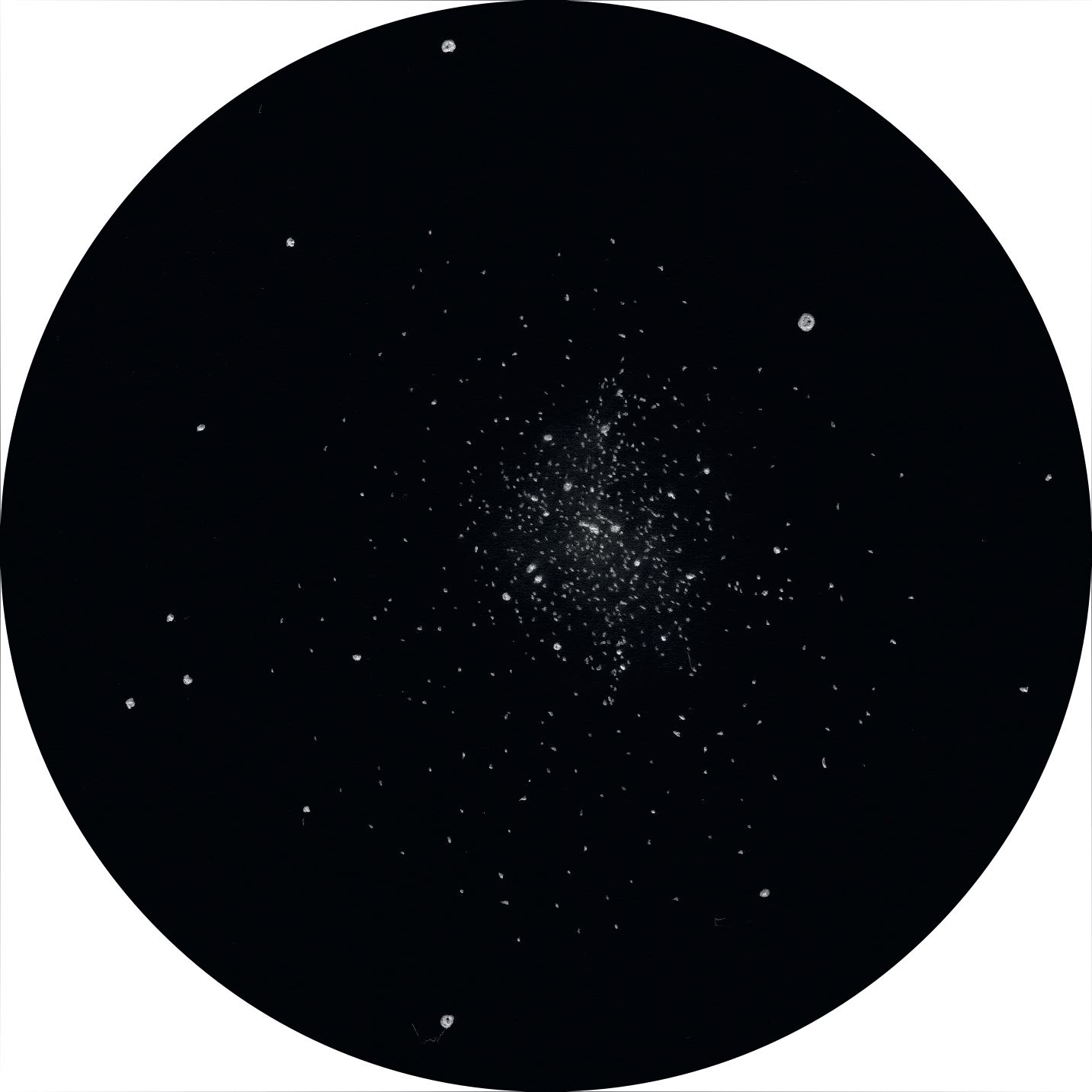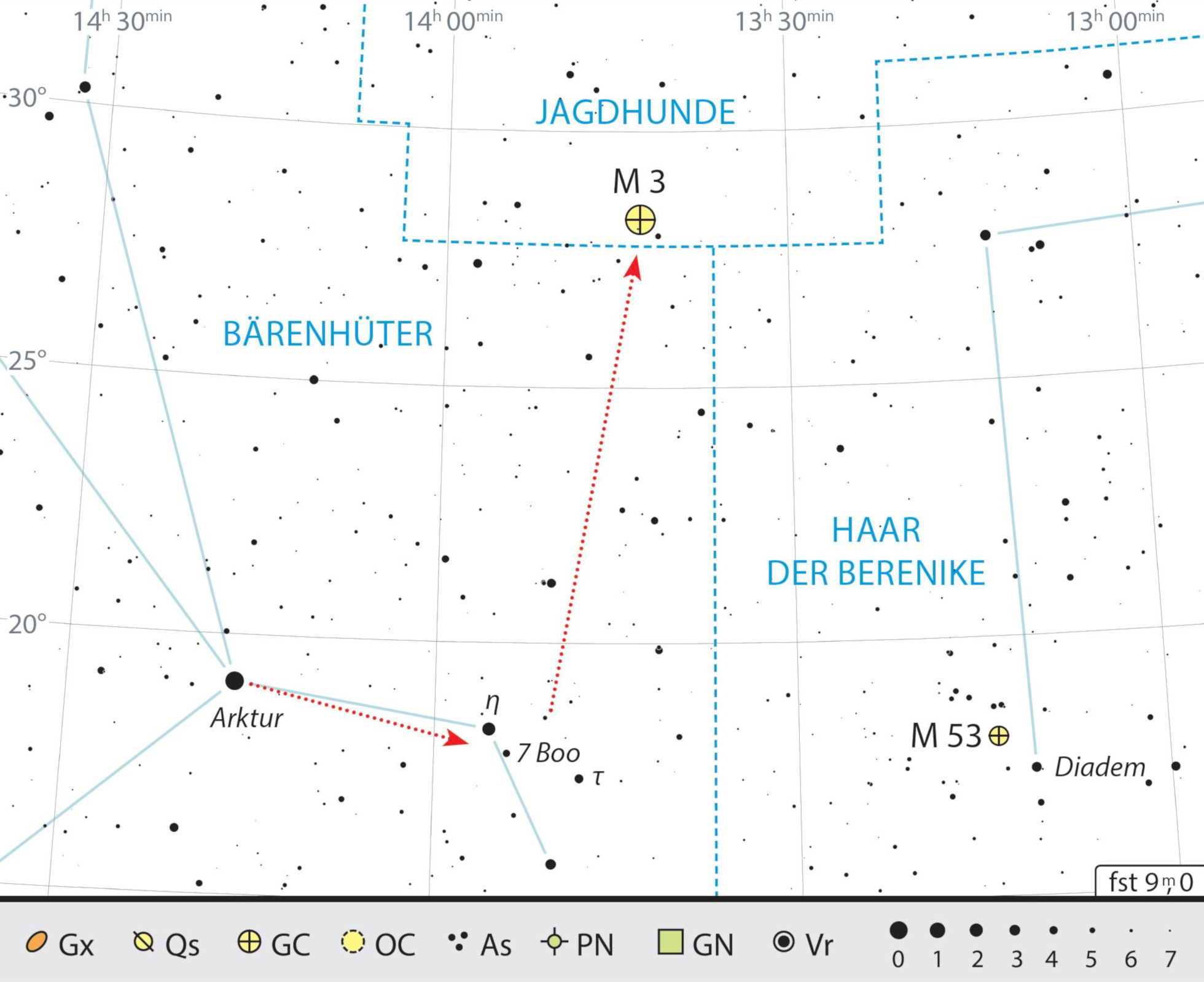M3 – Messier's first independent discovery
This globular cluster in the constellation of Canes Venatici is considered to be Charles Messier’s first discovery. But can you succeed in resolving the individual stars?
 Globular cluster M3 in the constellation of Canes Venatici . Bernhard Hubl/CCD Guide
Globular cluster M3 in the constellation of Canes Venatici . Bernhard Hubl/CCD GuideM3, the globular cluster in the constellation of Canes Venatici, is considered to be Charles Messier’s first independent discovery. On 3 May 1764, he noted: "Nebula discovered between Boötes & one of the Hunting Dogs of Hevelius (Canes Venatici), it doesn't contain any star, its centre is brilliant, and its brightness fades imperceptibly, it is round; under a good sky, one can see it in a telescope of 1-foot.”
Messier's description is essentially the same as the image that a city-based astronomer sees when looking at M3. Even today, a telescope with a short focal length and a small aperture (from 60mm) is sufficient to detect the magnitude 6.2 and 18' wide globular cluster as a blurred fog. Clearly, Messier did not succeed in resolving his object into single stars. And this is precisely where the difficulties begin for the city astronomer, too – trying to resolve this grainy image of M3.
Exactly inside the triangle
 Illustration of M3. Hans-Jürgen Merk
Illustration of M3. Hans-Jürgen MerkThe first thing you need to do is find M3. With GoTo control, this author was always able to do this precisely and without any subsequent correction. Anyone who goes on the search without technical assistance should first pan 6° west from the bright star Arcturus (α Boo) west towards a striking trio of stars comprising η, τ and 7 Boo and then search the northern section of the sky for a nebulous disk.
It’s helpful that M3 is located exactly inside a triangle of faint stars, which also serve as a focusing aid. Once you have properly focused your telescope on the stars in the surrounding area, M3 should also quite easily appear as a wide foggy disc.
Resolution is possible
However, M3 remains as hazy in telescopes with a small aperture as Messier himself described, a good 250 years ago. The most fascinating question that arises when observing globular clusters from urban locations is whether it is possible to granulate the nebula, i.e. to resolve the haze into individual stars. Experience shows that M3 requires at least an 8-inch mirror telescope and magnifications of 160× and more. If the night is reasonably dark, you may well have some success resolving M3 – if necessary by using the averted vision technique: look slightly to one side of the foggy disc, then individual stars within the cluster should be visible as flashes of light.
 Location map for M3 in the constellation of Canes Venatici . J. Scholte
Location map for M3 in the constellation of Canes Venatici . J. ScholteAuthor: Karl-Peter Julius / Licence: Oculum-Verlag GmbH
